The Huawei P20 & P20 Pro Review: Great Battery Life & Even Better Night Vision
by Andrei Frumusanu on June 15, 2018 11:00 AM EST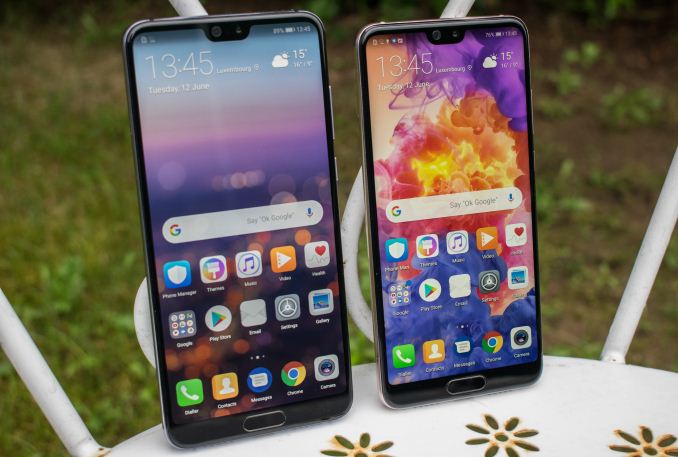
For me, Huawei holds a special place among device manufacturers, as the Honor 6 and Mate 7 were the two first reviews I had written on AnandTech. This was back before Huawei found wide-spread success both in China as well as western markets, so it could be said that I’ve been following the company’s devices from before they were “cool”.
Over these years we’ve seen the company post impressive year-on-year growth figures and steadily climbing up the mobile device manufacturer lists in terms of sales. Most recently this year, the company hit some unpleasant roadblocks while trying to enter the US market and then being unceremoniously dropped from planned carrier deals at the last moment due to pressure from government agencies. For now, this seems to have put an end to Huawei’s ambitions in the US as the company is closing off branches and stopping lobbying efforts in the country. However, outside the US, Huawei products are as popular as ever; and the technology in them is ever improving with each generation.
Late in March Huawei announced the Huawei P20 and P20 Pro in Paris and we were there to cover it. Both devices mark major changes for Huawei in terms of product designs, and today we’ll cover more in-depth the detailed characteristics of both phones. For a recap, let’s go over the specification list:
| Huawei P20 Series | ||
| P20 Pro | P20 | |
| SoC | HiSilicon Kirin 970 4x Cortex A73 @ 2.45GHz 4x Cortex A53 @ 1.84GHz Mali G72MP12 @ 746MHz |
|
| Display | 6.1-inch 2240x1080 (18.66:9) SAMOLED |
5.8-inch 2240x1080 (18.66:9) RGBW LCD |
| Dimensions | 155.5 x 73.9 x 7.8 mm 180 grams |
149.1 x 70.8 x 7.65 mm 165 grams |
| RAM | 6GB LPDDR4X | 4GB LPDDR4X |
| NAND | 128GB UFS 2.1 | |
| Battery | 4000 mAh | 3400 mAh |
| Front Camera | 24MP, f/2.0, Fixed Focal Length | |
| Primary Rear Camera | 40MP 1/1.7" Sensor RGB 1µm pixels, up to ISO 102400 F/1.8 lens |
12MP RGB F/1.8 lens |
| Secondary Rear Camera | 20MP Monochrome F/1.6 lens |
|
| Tertiary Rear Camera | Telephoto lens 3x zoom 8MP, f/2.4, OIS |
- |
| Modem | Kirin 970 Integrated LTE (Category 18/13) DL = 1200 Mbps 5x20MHz CA, 256-QAM UL = 150 Mbps 2x20MHz CA, 64-QAM |
|
| SIM Size | NanoSIM | |
| Wireless | 802.11a/b/g/n/ac 2x2 MU-MIMO, BT 5.0 LE, NFC, GPS/Glonass/Galileo/BDS |
|
| Connectivity | USB Type-C, No 3.5mm headset |
|
| Features | Fingerprint sensor, fast charging (USB-PD), IP68 water resistance |
|
| Launch OS | Android 8.1 with EMUI 8.1 | |
Much like the P10 and P10 Plus last year, Huawei has adopted launching two flagships models this year, both with slightly different sizes and specifications. At the heart of both the P20 and P20 Pro we find the Kirin 970: we’ve had an extensive SoC-centric review of the chipset inside the Mate 10 and Mate 10 Pro earlier this year, dwelling into details such as the performance and power of CPU, GPU and particularly unveiling some characteristics of the new NPU (Neural processing unit). The chip’s CPU configuration consists of 4x Cortex A73 at 2.36GHz and 4x Cortex A53 at 1.84GHz. This is the same configuration as found last year in the Kirin 960 – and a generation behind current flagships such as the Snapdragon 845. We’ll get back to this in the system performance and battery section – where we’ll find some quite good results from the chip. On the GPU side the Mali G72MP12 at 746MHz powers graphics and 3D workloads – although again we’ll have more details in that particular section and how the P20’s differ from the Mate 10’s in this regard.
On the memory side the P20 Pro comes with 6GB of LPDDR4X while the smaller P20 comes with 4GB. In terms of storage, both devices come with large base storage capacities of 128GB of UFS 2.1 NAND solutions. Huawei’s choice of going this high in base storage is well received as the devices don’t offer expandable storage via microSD cards – something other companies which also choose not to offer should take note of.
As noted in the intro, the P20 Pro and P20 come with a major design overhaul that no longer bares any similarity to the P10 line or past Huawei devices. Huawei first transitioned to a glass back design and new wide aspect ratio screens in the Mate 10/Pro series, and in the P20’s we see the evolution of this design.
The smaller P20 comes with a 5.8” 2240x1080 RGBW LCD screen, which results in an aspect ratio of 18.66:9. As screen diagonals nowadays don’t really convey the size of a phone anymore – let’s keep it to the basics: a phone width of 70.8mm, which is slightly wider than last year’s P10 and comes most similar to the iPhone X when comparing it to competing devices. The P20 however feels smaller, and that’s mainly due to the thinner form-factor of 7.65mm. Still, Huawei packed a 3400mAh battery into the P20, which if I’m note mistaken, puts it at the top in terms of battery capacity for that particular phone size.
The P20 Pro comes at a larger 6.1” diagonal with a same resolution screen, however this time it sports an AMOLED panel from Samsung instead of an LCD. Both screens are wide gamut capable and use configurable sRGB or DCI-P3 colour spaces. The P20 Pro is only 3.1mm wider than the P20 at 73.9mm, however this results in a noticeable different feel than the P20, making it the same form-factor as the Mate 10 Pro and Galaxy S8+/S9+. Here, Huawei included a 4000mAh battery, which also a defining characteristic of its larger devices that Huawei prides itself in able to offer.
Huawei’s inclusion of display notches made a lot of fanfare in the media and in terms of feedback from users – but personally I don’t have any strong feelings either way, especially since Huawei includes a mode where the notification area in the notch ears can be blacked out to create a seemingly uniform top edge. Inside the notch area we find a 24MP front-facing camera with an F/2.0 lens and fixed focal length, a pair of sensors and the small round earpiece grill. The notification light is found above the sensor array – here I think Huawei could have done better as I find the light to be extremely small and not that very noticeable.
For people who don’t like the notch cut-out, the blackout mode isn’t complete total solution as the due to the difference in reflectance of the screen and the black bezel, it’ll still be noticeable in sunlight. The smaller P20’s LCD screen also doesn’t offer sufficiently deep blacks to completely hide this in low-light scenarios (But does so very well in everyday lit cases).
Obviously the cameras of the P20 were the centre-point of their coverage. The smaller P20 doesn’t change its specifications on paper when compared to the P10: We’re still seeing a main 12MP RGB sensor paired with a 20MP monochrome sensor. Huawei did improve the lens as it now features an F/1.8 aperture. There’s no OIS here and Huawei solely relies on EIS for stabilisation.
The P20 Pro’s camera setup is what made some big rounds around the media as well as on our initial hands-on in Paris: The main camera sensor is a huge 1/1.7” 40MP sensor. The pixel pitch here is a mere 1µm – however Huawei extensively uses pixel binning in 2x2 pixel arrays, resulting in an effective resolution of 10MP and 2µm pixel pitch in most shooting modes. The sensor also promises a sensitivity of up to ISO 102400 – something that not used nearly as much as one would think but still extremely impressive as we’ll see in the extreme low light capture comparisons later in the review.
However the P20 Pro doesn’t stop at differentiating its main sensor – it also adds a telephoto module which makes the phone a distinguished triple camera shooter. The 8MP telephoto module comes with a f/2.4 lens and optical 3x zoom. This is the only module that also features OIS on the P20 Pro. Huawei also promises a hybrid 5x zoom by using pixel interpolation between the 40MP and 8MP modules, which ends up being very impressive.
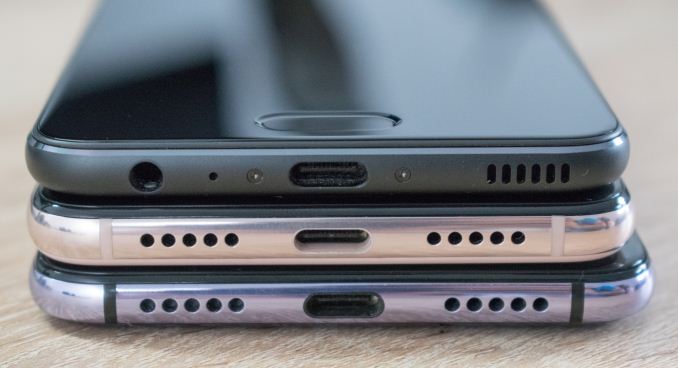
P10, P20, P20 Pro (top to bottom)
The P20’s unfortunately follow the Mate 10 Pro’s dismissal of the headphone jack – something I still think is a mistake from several vendors. At least it seems that Huawei’s internal design is actually one of the rare ones which does take advantage of its removal by increasing the battery footprint inside the phone and offer larger batteries.
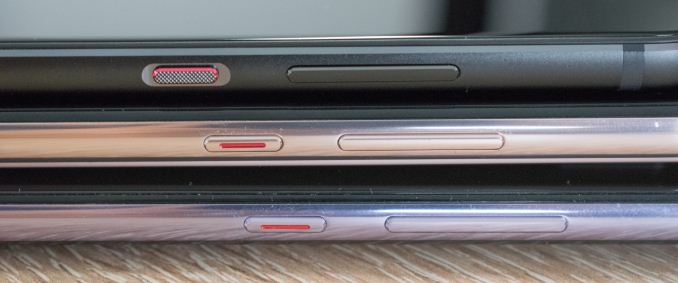
P10, P20, P20 Pro (top to bottom)
The P20’s notably improve on the tactile feedback of the volume and power buttons versus the P10 as they get rid of the sharp and shallow clicks in favour of a deeper and softer actuators.
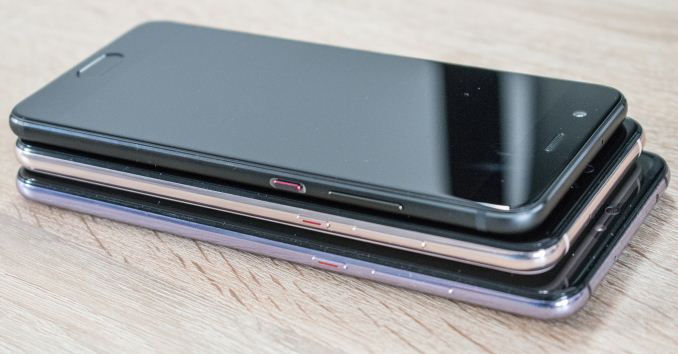
P10, P20, P20 Pro (top to bottom)
One thing that I did not like about the P20 variants which I got is the shiny metal rim around the phone. Although it looks relatively premium (subjectively), it had more of the feel of plastic than metal. Unfortunately this seems to be a characteristic of the variants I got sampled as for example the black P20’s feature a matte finish on the device edges which I would think would be a much better feel for the phones.
Finally, both P20’s have the fingerprint sensor located at the bottom lip at the front of the phones. This is again the same setup as on the P10’s, but in a much thinner format.


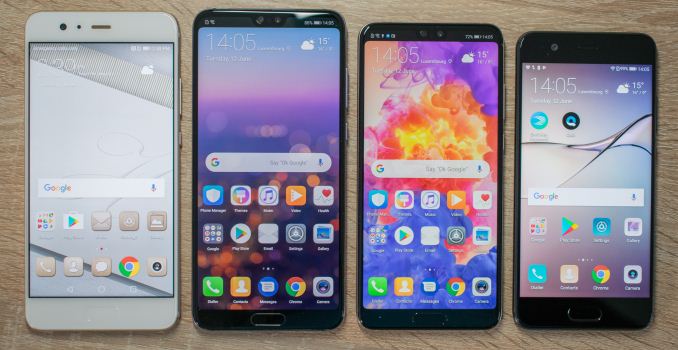
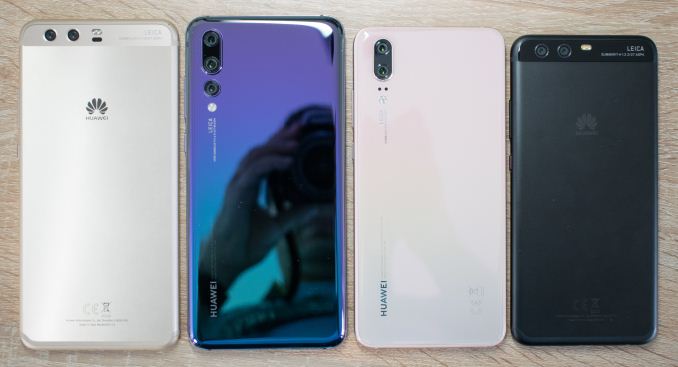
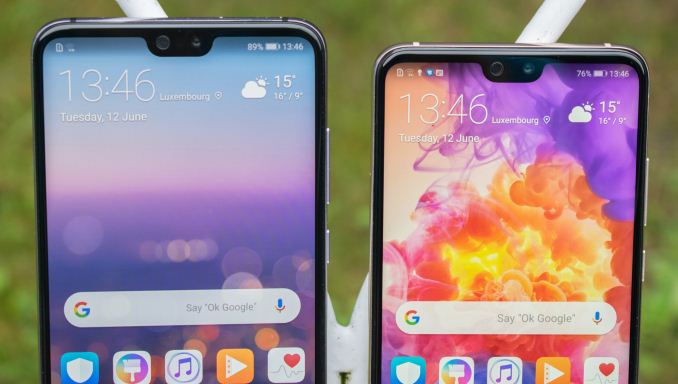

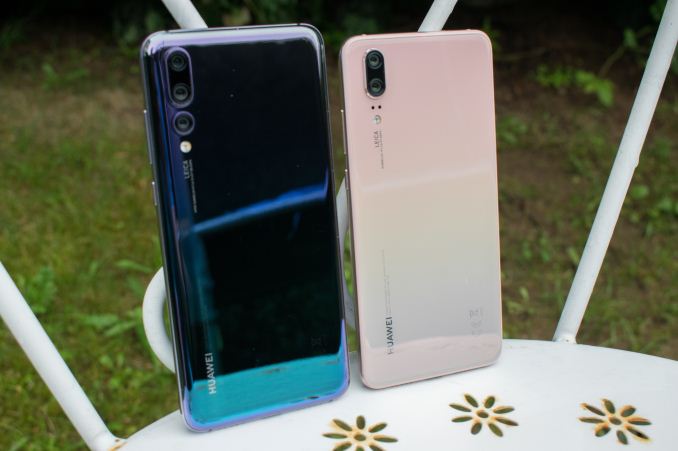
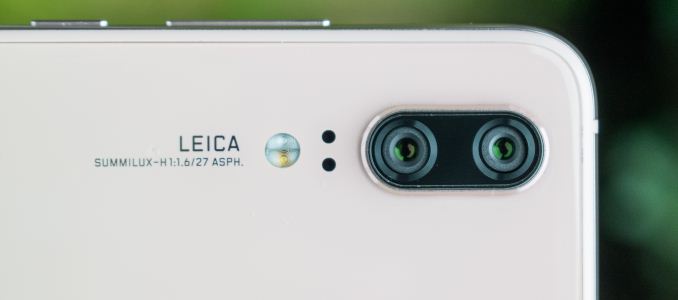
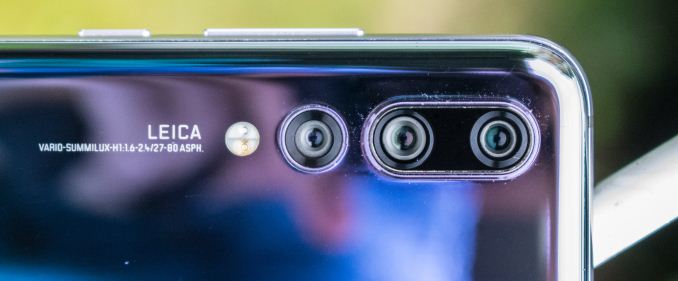









81 Comments
View All Comments
damianrobertjones - Tuesday, June 19, 2018 - link
After reading this review I'll simply keep the Mate 10 Pro and carry on. I was truly hopeful to finally have a Nokia 1020 killer but... it's not to be. Now THAT was an amazing camera (Especially with the grip).Years fly by and all we're seeing is small little jumps in camera tech while the 1020 had it all.
s.yu - Tuesday, June 19, 2018 - link
I don't think it's a matter of making jumps or steps but rather Huawei intentionally made a jump backwards. They have at least half of the original Pureview imaging team yet the rendering bears no resemblance to the 1020 nor the 808. They were probably explicitly ordered to bump up saturation to 11, and sharpening, NR to 13. The quad-bayer also does more damage than good, they could have gone for a 40MP bayer proper and ended up with much fewer false interpolation color and smearing. Now P20Pro RAW is gigantic (close to 80MB, larger than my a7RII's output) yet good as useless as it doesn't stand to clarity boost and sharpening (current algorithms are simply ineffective in extracting data from that interpolation pattern) and probably won't merge well in LR mobile's HDR RAW mode either.Speaking of which, LR mobile's HDR RAW is a real revolution. Although an exposure takes about half a minute to process (on the slow side, but its nothing if you got your shot) and may be more prone to shaking (as all auto HDR are), it yields DNG files from my Note 8 with DR in the range of APS-C sensors so far with imperceptible loss in sharpness from the merge. It hardly solves low light performance(shutter speed is automatically determined and doesn't seem to go very low) but it does help bring back highlight DR in low light, and in daylight it often substitutes a professional compact like a Coolpix A or Ricoh GR.
peevee - Tuesday, June 19, 2018 - link
A73/A53 are so last year...p51d007 - Friday, June 22, 2018 - link
Shame...I started out with a Huawei Mate2 years ago, then upgraded to the Mate 8, then the 9 after someone bought my 8.Sadly, due to the U.S. government telling retailers, carriers "you better not", the 9 might be my last Huawei phone. If I can't get the software to run it in the U.S. without jumping through hoops, support and what not, I'll have to start looking elsewhere.
Shame...I've loved every one of them! Very stable, LONG battery life and good value.
pruthviraj - Saturday, June 23, 2018 - link
i am waiting and i want to <a href=”http://newslm.com/buy-redmi-note-6-pro-online-at-t...”>Buy Redmi Note 6 Pro</a>djayjp - Saturday, June 23, 2018 - link
Btw, author, OIS has nothing do with exposure lolalbert89 - Saturday, June 30, 2018 - link
Oh yeah, that's that Chinese Co's that was fined by the U.S for breaking trade embargo's and stealing technology. I don't care how popular they were over seas. They arnt going to get my business and many people feel the same way. Do you wanna reward the Chinese communist party for stealing ? You either stand for something or nothing at all.max123 - Wednesday, August 8, 2018 - link
Now that we know <a href="https://youmobile.com.pk/phone/1061/huawei-y3-2017... Huawei Y3 2018 and Huawei Y3 2017</a>(Y5 Lite 2017) are basically the same phones with different software, we think that it’s likely the outgoing 2017 edition could also get Android Go features via an update.
max123 - Wednesday, August 8, 2018 - link
<a href="https://youmobile.com.pk/phone/1065/huawei-p20-pro... Huawei P20 Pro is one of the primary cell phones</a> we have seen with three separation camera focal points on the back. The best one is a 8 megapixel zooming focal point, the center one is a 40 megapixel RGB focal point, and the last one (set apart independent from anyone else) is a 20 megapixel mono focal point.Freedom11 - Tuesday, September 4, 2018 - link
Thank you for a brilliant review. I am between the P20 and P20 Pro. My question is whether the differences between the P20 Pro and the P20 is worth the price difference. I would truly appreciate if someone could summarise the advantages of the Pro over the standard P20. From reading the review, I see the main advantage in being the 5x zoom and the very, very dark lighting situations, which I guess both would be used more rarely. But even so the P20 performs very well in night shots! Thank you very much!!